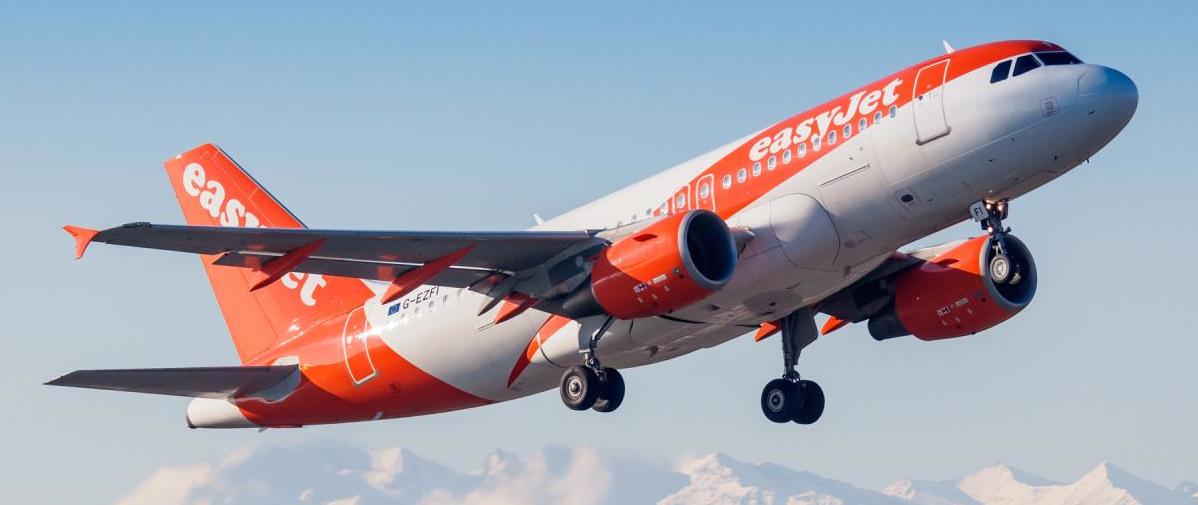easyJet joins Race to Zero

- easyJet joins Race to Zero by committing to set an interim carbon emissions reduction target for 2035 and to reach net-zero carbon emissions by 2050
- The airline will submit its interim science-based target to the Science Based Targets initiative (SBTi) for validation and present its net-zero roadmap in the coming months
- easyJet has consistently taken action on its carbon emissions through efficient operations today and the ultimate ambition to achieve net-zero emissions flying
easyJet today has joined Race to Zero, a global UN-backed campaign to achieve net-zero carbon emissions by 2050 at the latest.
In joining Race to Zero, the airline is committing to set an interim science-based target for 2035 as well as to reach net-zero carbon emissions by 2050, aligning with the criteria and recommendations of the Science Based Targets initiative (SBTi). easyJet plans to present its net-zero roadmap in the coming months.
Johan Lundgren, CEO of easyJet, said:
“Joining Race to Zero is a major milestone in easyJet’s net-zero journey and I’m very proud to be able to make this announcement today.
“Climate change is an issue which we all have to tackle – including us at easyJet. We have a responsibility to minimise the impact of our flights and we are working very hard to make this happen; from efficient flying and fleet renewal to being the only major European carrier that is offsetting the carbon emissions from the fuel used for all its flights on behalf of all its customers.
“Our ambition is to ultimately achieve net-zero emissions flying in the UK and across Europe and we are proactively working alongside industry leaders, such as Airbus and Wright Electric, to help support and champion zero-emission technologies for passenger planes of the future.”
Aviation Minister, Robert Courts said:
“It’s great to see easyJet joining Race to Zero on COP26’s Transport Day.
“COP26 represents an opportunity to build momentum in reducing aviation emissions, particularly ahead of the next ICAO Assembly in 2022.
“easyJet are stepping up to the challenge – putting in place a net-zero roadmap which will help secure a sustainable future for the sector and creategreen jobs in the process.”
Making flying more sustainable is something easyJet has long prioritised.
In 2019, it became the first major airline worldwide to offset the carbon emissions from the fuel used for all its flights, and currently remains the only major airline in Europe to do so. This comes at no additional cost to its passengers and the airline only supports projects that are certified by either Gold Standard or Verified Carbon Standard.
However, easyJet acknowledges that offsetting can only be an interim solution. easyJet believes that aviation needs to make radical changes and is working with its partners Airbus and Wright Electric to accelerate the development of zero-emission technologies. The airline is optimistic that it could begin flying customers on planes powered by hydrogen-combustion, hydrogen-electric or a hybrid of both by the mid to late-2030s.
easyJet operates Airbus NEO aircraft, which are 15 per cent more fuel-efficient than the planes they replace, and they continue to join its fleet, making it one of the youngest and most fuel-efficient in Europe.
The airline is also constantly striving in its everyday operations to reduce fuel consumption, with single-engine taxiing on departure and arrival and the use of advanced weather information to improve navigation performance. These efforts mean that, since 2000, easyJet has reduced its carbon emissions per passenger kilometre efficiency by more than a third.
Beyond carbon, easyJet is focusing on reducing plastic – more than 27 million single-use plastic items were eliminated – as well as reducing waste within its wider operations and the supply chain. For instance, the airline also recently introduced new crew uniforms made from recycled plastic bottles. Forty-five bottles go into each outfit – with the potential to prevent 2.7 million plastic bottles from ending up in landfill or in oceans over the next five years. The garments are fashioned from a high-tech material that is made using renewable energy sources and has a 75 per cent lower carbon footprint than traditional polyester.
